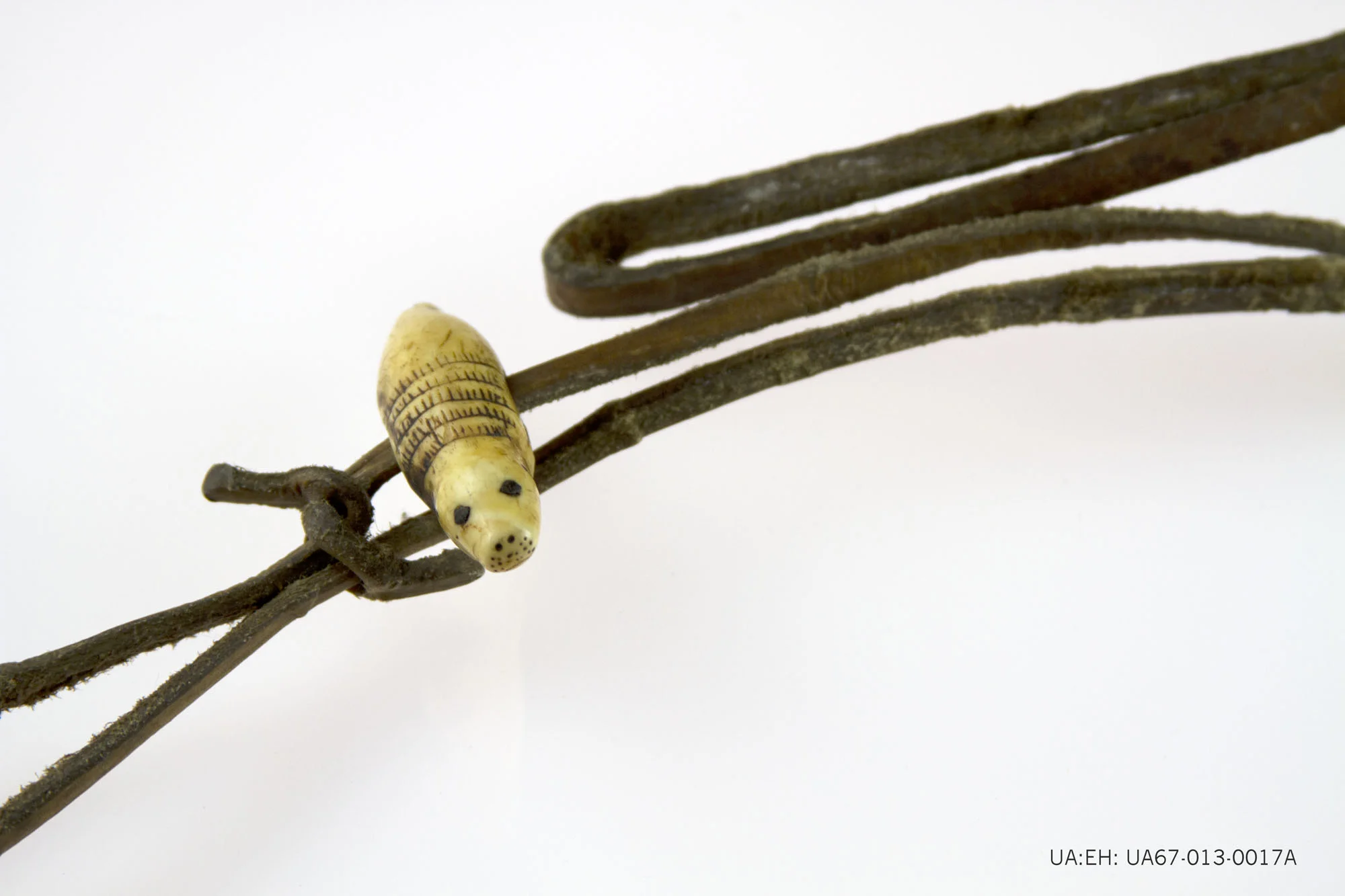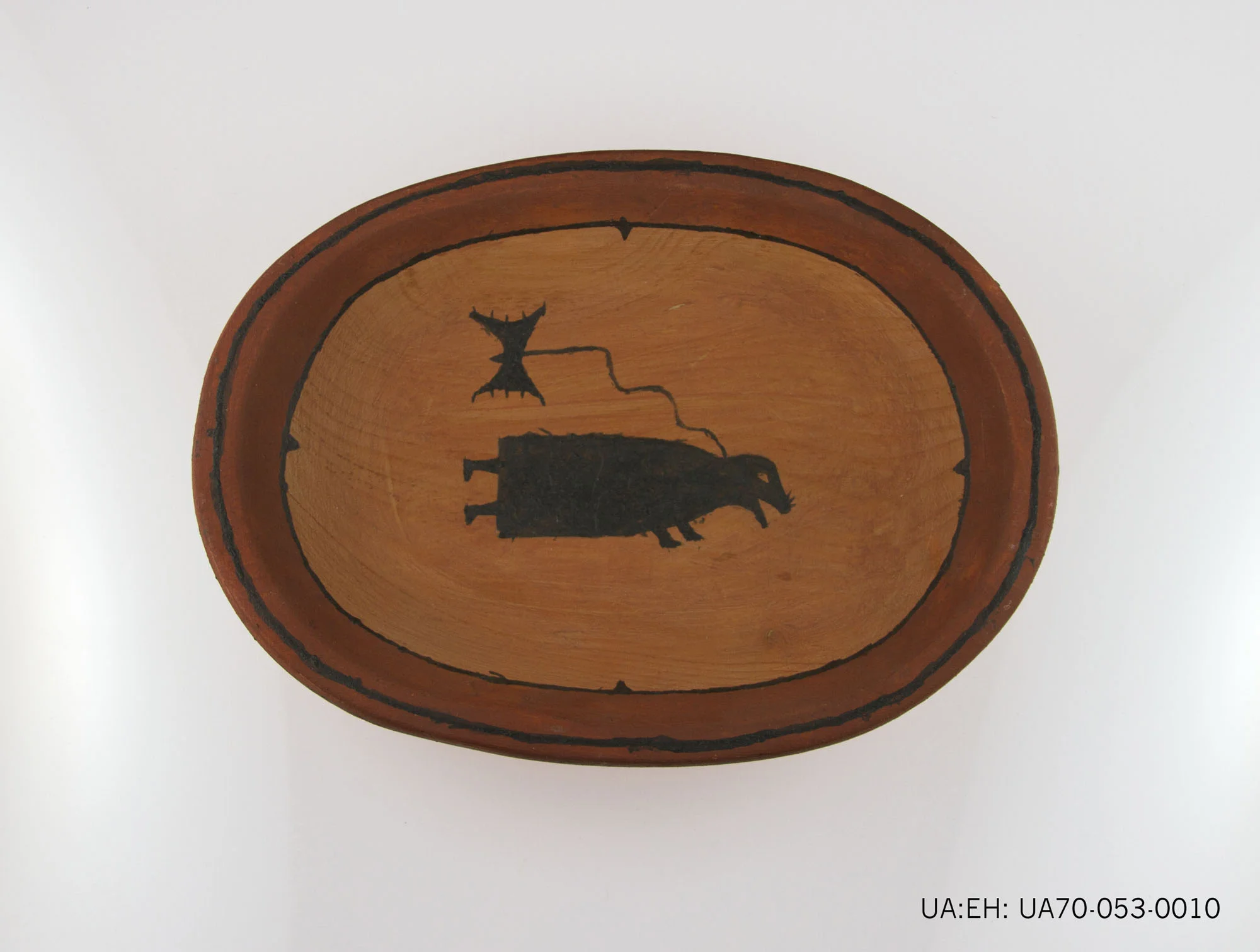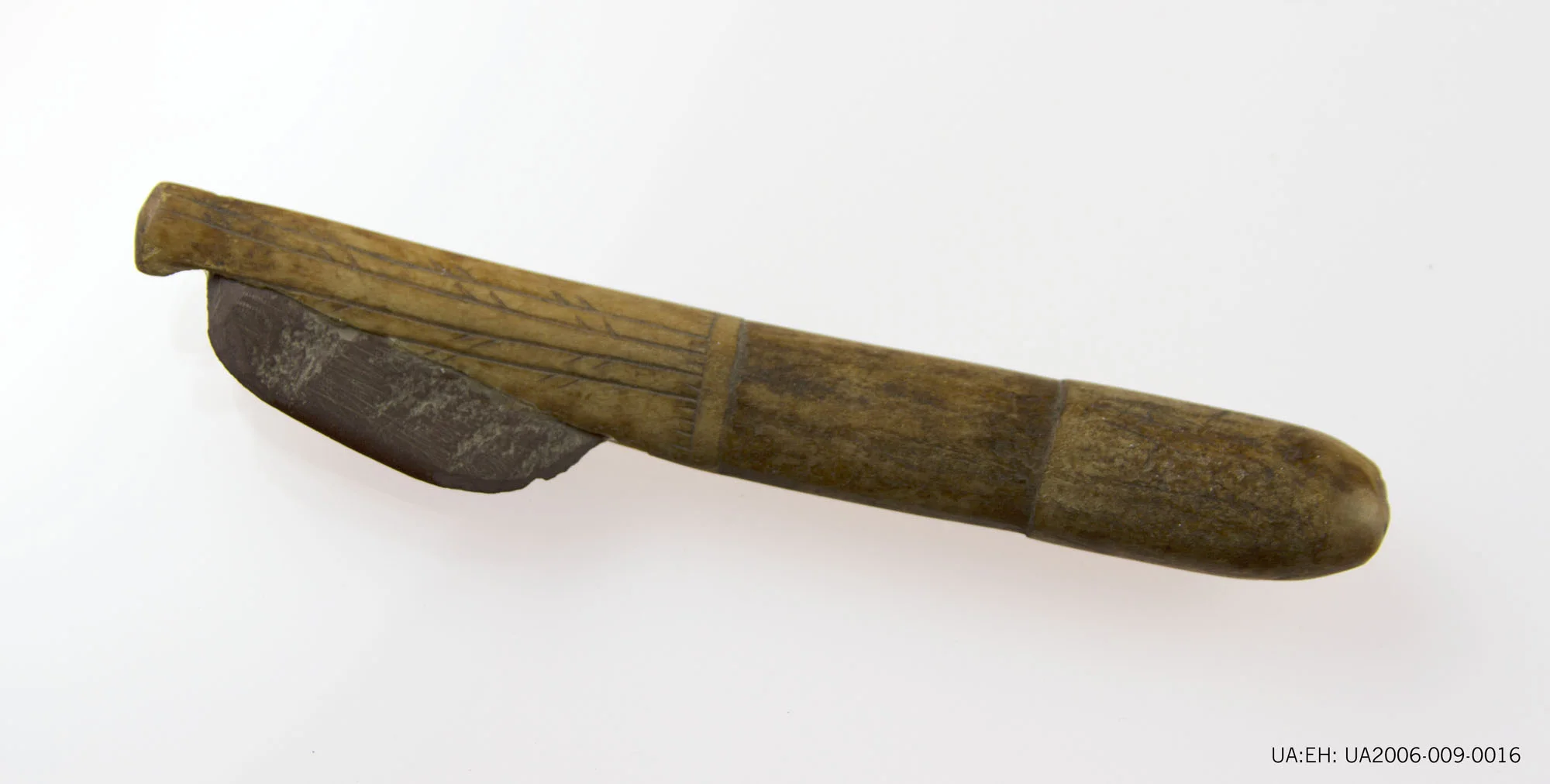My Influences
This past week has been full of research! I had been asked to give a presentation on my art and inspirations for the 2014 Arctic Science Conference in Fairbanks. I took this opportunity to try and figure out what exactly it was about Anthropology that inspires my work as a ceramic artist. Putting together this presentation made me ware of the many ways I reinterpret anthropology; by adapting the visual elements of the Northern ethnographic material that I research and work with at the University of Alaska Museum of the North and link anthropological meaning to utilitarian ceramics.
Ceramics has a long history, dating back to 9000BCE of being used as a vessel to contain grains, wine, oil, and other foods. These vessels were decorated with images or patterns that documented a time, place, mythology, and heros of a particular group of people. Today we still use ceramics--jars, teapots, bowls, coffee mugs, tea cups, platters, plates, the list goes on! In my work, I try to communicate anthropological concepts and inspiration from the place that I live in, the North.
"Coming and going of the Shaman" Karoo Ashevak, National Gallery of Canada
Perhaps the most fascinating thing about these cultures for me is the connection between the people and the animals, living off the land, the connection between the spirits and the cosmos, and the way that the people of the north found balance in everything. Traditionally much deference and respect is paid to the spirits--they controlled the conditions of the hunt, the weather, wealth, misfortune, and accidents. In order to keep the favor of these spirits, certain rituals were observed (depending on what needed to be alleviated) to appease the spirits and return balance to the community. Shamans were the main communicators with the spirits, however, each person was able to take precautions and observe taboos to keep the spirits happy.
Detail of an ivory Yup'ik harpoon head. University of Alaska Museum of the North.
Many ivory objects are ornamented with incised lines that are then filled in with lamp black (a mix of oil and soot from the oil lamps) and rubbed away, like scrimshaw. Working bone and ivory into tools and weapons was considered more than just a necessary task. It was believed that if great care was taken when working with the bones and materials from animals, then the animal would be attracted to the hunter without hesitation, almost offering itself. The lines that ornament the ivory and bone tools, weapons, handles, sewing kits, etc all show respect to the spirits and animals.
Yup'ik spoon showing a painted design on the interior of the bowl. University of Alaska Museum of the North UA98-016-0001
There are also many different kinds of marks found on objects. For example, wooden spoons or bowls would be more elaborately painted with ochre or blood with images and decorations that would have been passed down from generation to generation. Many of these marks are ownership marks, that showed who the item belonged to. These marks would then be simplified on the tools or weapons so that owner could be identified.
Another object that I've been particularly drawn to are Yup'ik story knives. Story knives were gifted to young girls and with them they would illustrate stories in the snow or mud (depending on the season) with symbols that would narrate the story. These stories could be real, make believe, or myths told to them by elders. Some are elaborately decorated while others have simple lines and designs incising the ivory.
Yup'ik story knife. University of Alaska Museum of the North.
One from the Story Knife Set. 2014. Slip inlay, shino glaze, reduction fire cone 10. Kirsten Olson
What I've come to realize in all of this is that the forms and lines of my work reference the many ethnographic objects I've come across in working at the UA Museum of the North. Much like the story knives, the universal nature of ceramics is such that it creates opportunities to share thoughts and stories with others. These ceramics vessels not only contain the food or drink we serve in them, they also contain these ideas of Northern culture via the forms I choose to make and the marks ornamenting the vessels. Perhaps the user will become aware of these ideas of community and culture in using handmade ceramics. The use of handmade ceramics parallels the use of the ethnographic pieces in the way that it represents a history and culture in addition to its inherent functional use. When we partake in shared meals, the vessels serve more than just their function, they then hold the cultural meaning, values, and memories of the shared event.
I encourage everyone to enjoy handmade ceramics, no matter what the inspiration. It will surely embellish and enrich your own daily rituals. Cheers!








